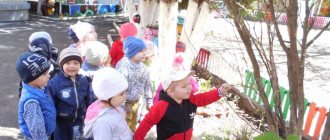We all come from childhood. Almost everyone listened to bedtime stories and imagined themselves as participants in magical adventures - the girls were fairies and princesses, the boys were the constant winners of dragons and all sorts of goblin-ghouls. But we hardly thought then that a fairy tale was a very important (if not the main!) element of our upbringing and the system of our ideas about the world, about good and evil, about work and “rewards” for laziness.
Now, sitting on the other side of the crib, it’s worth figuring out what a fairy tale is from a scientific point of view and how you can help your baby in temporary age-related or stressful situations, how can a fairy tale “cure” greed, enuresis, and fear of the dark?
So, welcome to the magical world of the fairy “wrong side”!
Where did the idea of education through fairy tales come from?
Classic of Russian pedagogy K.D. Ushinsky wrote that fairy tales are “the first and brilliant attempts of Russian folk pedagogy, and I don’t think anyone would be able to compete in this case with the pedagogical genius of the people.” The same opinion was shared by the researcher of Russian folklore V.P. Anikin, who said that “in the thought that gives life to fairy tales, the multifaceted mind of the people was manifested, their history, life, and worldview were deposited in crystals.”
One cannot argue with the value of fairy tales also because they begin to be read to children at an age when children are just beginning to form the rudiments of morality, goodwill, integrity and hard work.
A fairy tale, passing through centuries of folk wisdom, like a snowball accumulates all the most valuable things for children's preschool pedagogy. This is a unique way to raise a child not with the help of exhortations and abstract judgments, but with the help of direct experience and the actions of heroes who may or may not be loved, but are still very significant for the child. It is only important to manage this treasure wisely.
Currently, despite the obvious interest in fairy tales as an educational “tool,” there are many difficulties - the lack of consistency entails the lack of methods of pedagogical influence, and, therefore, affects the effectiveness of the pedagogical use of fairy tales. To this day, some teachers and educators find it difficult to imagine that, from the point of view of educating moral attitudes, the potential of a fairy tale is much more serious than its artistic and historical significance.
Consultation for parents “Parenting with a fairy tale”
Consultation for parents “Parenting with a fairy tale”
Authors: Kirillova Olga Yurievna
How to raise a cheerful and confident person? There is a wonderful way that can be used almost from birth - this is education with a fairy tale. With the help of a fairy tale, you can correct a child’s behavior, teach something, relieve fears and worries, and show how to behave in a given life situation. A fairy tale is the most understandable way for a child to transmit and receive information. Children carefully observe the manifestations of our feelings and emotions, behavior and manners, and then transfer this into their lives. As a rule, children perceive only the information that is transmitted to them in direct communication with adults and which is colored by a variety of intonations and emotions. It is in fairy tales that vivid images arise that are so easily and vividly imagined by children's consciousness. Listening to a fairy tale, a child “sees” its characters, empathizes with them, rejoices with them, learns from them, wants to be like them, or, on the contrary, promises himself never to do that. A fairy tale touches a child’s soul, makes him think, change something in himself, and helps him find a way out of the current situation. Fairy tales contrast good and evil, generosity and greed, courage and cowardice, kindness and cruelty. Fairy tales directly and clearly, using vivid examples, explain to the child that to be bad means to act to one’s detriment, and to be good is right and beneficial. After all, a reward always awaits a positive hero. The language of fairy tales is much closer and more understandable to a child than boring parental notations and comments. A fairy tale does not cause internal resistance, so the child is able to listen to it. Children simply listen and draw their own conclusions. Through a fairy tale, a child can be presented with any information, even that which he refused to listen to and perceive in a conversation with his parents. After all, while listening to fairy tales, children involuntarily find echoes of their own lives in them and strive to use the example of a positive hero in the fight against their problems. A fairy tale can instill hope in a child, which means he will have the strength to go to success again. If you want to teach your child something good, then tell him a fairy tale in which the child himself performs this act. If you want to eliminate the unwanted behavior, then tell a story in which another child engages in the unwanted behavior and eventually gets over it. A fairy tale will help you learn more and better understand your child. To do this, while reading a fairy tale, carefully and unobtrusively monitor his reaction. After reading, discuss what you liked about the fairy tale, what you didn’t, which hero is closer to your child, what he would do in his place and why. It is important that during the discussion the child can express any opinion he has, i.e. whatever he says should not be condemned. A fairy tale told before bedtime creates a warm, kind atmosphere. It has a calming effect on the child. The child hears his native voice and feels your warmth. Create a reading ritual before bed, especially for those who have trouble falling asleep. Create conditions for a peaceful bedtime (wash your face, ventilate the room, light a night light, be calm yourself, agree in advance what you will read) - everyday consistent actions will teach the child that after all the procedures he should go to bed.
A modern parent tries to fill the child’s life with continuous development. Working with a fairy tale does not end after reading and discussing it. Working with a fairy tale can be varied. Here are some practical recommendations:
1. Tell or read fairy tales out loud. When reading, a child develops “inner” pictures. Accordingly, imagination develops.
2. Draw your favorite characters. If the child cannot yet do it himself, offer a template and ask him to color it. The illustrations will help your child experience the story in a new way.
3. Your favorite fairy-tale characters can be made from different materials: plasticine, clay, an old doll, cardboard, colored paper and others. Together with your child, come up with a new outfit, decorations for the characters, attributes - this will contribute to the development of originality of thought processes.
4. Ask your child to retell individual episodes - this develops speech and even literary abilities. If it’s difficult for him, try retelling it together, taking turns.
5. Role-play the dialogue, imitating the actions and voice of the characters. These games relieve stress and practice behavioral tactics in different situations. You can set up a home theater.
6. Invite your child to make an applique based on the plot of a fairy tale - this helps to pay attention to the smallest and most inconspicuous details. In addition, this activity develops fine motor skills and perseverance.
7. Try solving fairy tales. Cover part of the character and ask them to guess who it is and from which fairy tale, in what other fairy tales this hero appears and what roles he plays.
8. Choose a picture from a familiar book with fairy tales, and try to tell the fairy tale from memory with your child.
9. Take a toy hero from any famous fairy tale and try with the whole family to come up with a story about him. After saying one sentence, pass the toy to another family member so that he can continue the story.
How to compose a fairy tale with your child
By writing fairy tales with your child, you can touch his inner world, learn about what worries him, scares him, or, on the contrary, inspires and supports him. The plot of a fairy tale is built according to certain canons: in essence, it is a sequence of events united by a certain plot.
Start by creating a main character. Give him a name and image. You can also involve art therapy here - draw a hero or sculpt him from plasticine. Find out from your child what qualities the hero has, what his character is. Discuss what your story will be about. Typically, the main character has a goal and there are obstacles to achieving it. Also in the fairy tale there are hero-allies and hero-opponents. In the process of creating a plot, try to draw parallels with the child’s real life: ask how this relates to his experience and experiences, why did he choose such a goal and such tests for the hero?
How to read a fairy tale with a child
The main goal of discussing fairy tales is to build a connection between the behavior of the characters, the events occurring in the fairy tale and the real-life situations that the child faces. In this case, the plot of the fairy tale is transformed for the child into a personal store of knowledge and ideas, which he can turn to if necessary, for example, if he finds himself in some difficult situation. The famous fairytale therapist Tatyana Zinkevich-Evstigneeva suggests using the following scheme for discussing fairy tales:
A fairy tale is a lie, but there is a hint in it...
Discuss with your child what the fairy tale is about and what it teaches. Ask, in what situations in real life can what a child learned from a fairy tale be useful?
Baba Yaga vs. beautiful girl
Discuss the heroes of the fairy tale. Why does the hero perform this or that action? Why does he need this? What did he really want?
Fire, water and copper pipes
Talk about how the heroes of the fairy tale overcame difficulties. Did they turn to anyone for help? Perhaps someday your child will be able to use these methods in real life.
...a lesson to good fellows!
What feelings does this fairy tale evoke? Which episodes were particularly memorable? What episodes evoked joyful feelings? Which ones are sad? What situations caused fear?
Using the same scheme, you can discuss with your child the feature and animated films you watched together.
How fairy tales can be useful to parents
Fairy tales for children are not only an exciting journey into the world of fictional characters. Through fairy tales, children receive their first knowledge about the structure of life. At first glance, the world of fairy tales may seem black and white, with a clear division into good and evil. However, if we look deeper, fairy tales can also teach children a broader view of events and people. For example, the troubles and trials that befall the hero ultimately help him become stronger and more resourceful and lead to some desired changes. And sometimes in fairy tales there are ambiguous characters who, at first glance, behave like villains, and then are revealed - it is discovered that there are some reasons behind their behavior, or it was not villainous at all, but ultimately helped the hero.
Few parents know that fairy tale therapy can trigger the body’s self-regulation mechanisms. Blogger I am a Parent, clinical psychologist and certified fairytale therapist Ekaterina Blukhterova brings to your attention the therapeutic fairy tale “The Good Forest”: it will help your child find the inner strength for a speedy recovery.
How to come up with new endings to existing fairy tales
Sometimes, in order to help a child find a solution to a problem through a fairy tale, you don’t need to compose a new one. It is enough to come up with a new ending to one of those that already exists. Here it is important to choose a fairy tale whose key problem will coincide with the one that is currently relevant for the child. For example, if a child is worried about a strict teacher who gives a lot of tasks or gives low grades, you can discuss the fairy tale about Cinderella with him.
In fairy tales, magic often comes to the aid of the main character. Cinderella, for example, is protected from her stepmother by her fairy godmother. How could Cinderella cope on her own, without magical help? Was her stepmother so unfair to her, since Cinderella herself ran away without completing the “homework” left to her? Did Cinderella have any options to negotiate with her stepmother?
So, with the help of fairy tale therapy, you can help your child change his attitude towards a situation that he experiences as hopeless or unfair. With your help, he will learn to look at the problem from different angles, look for options and not feel small and helpless.
Anna Kolchugina
Does your child believe in miracles? Find out together! TAKE THE TEST!






